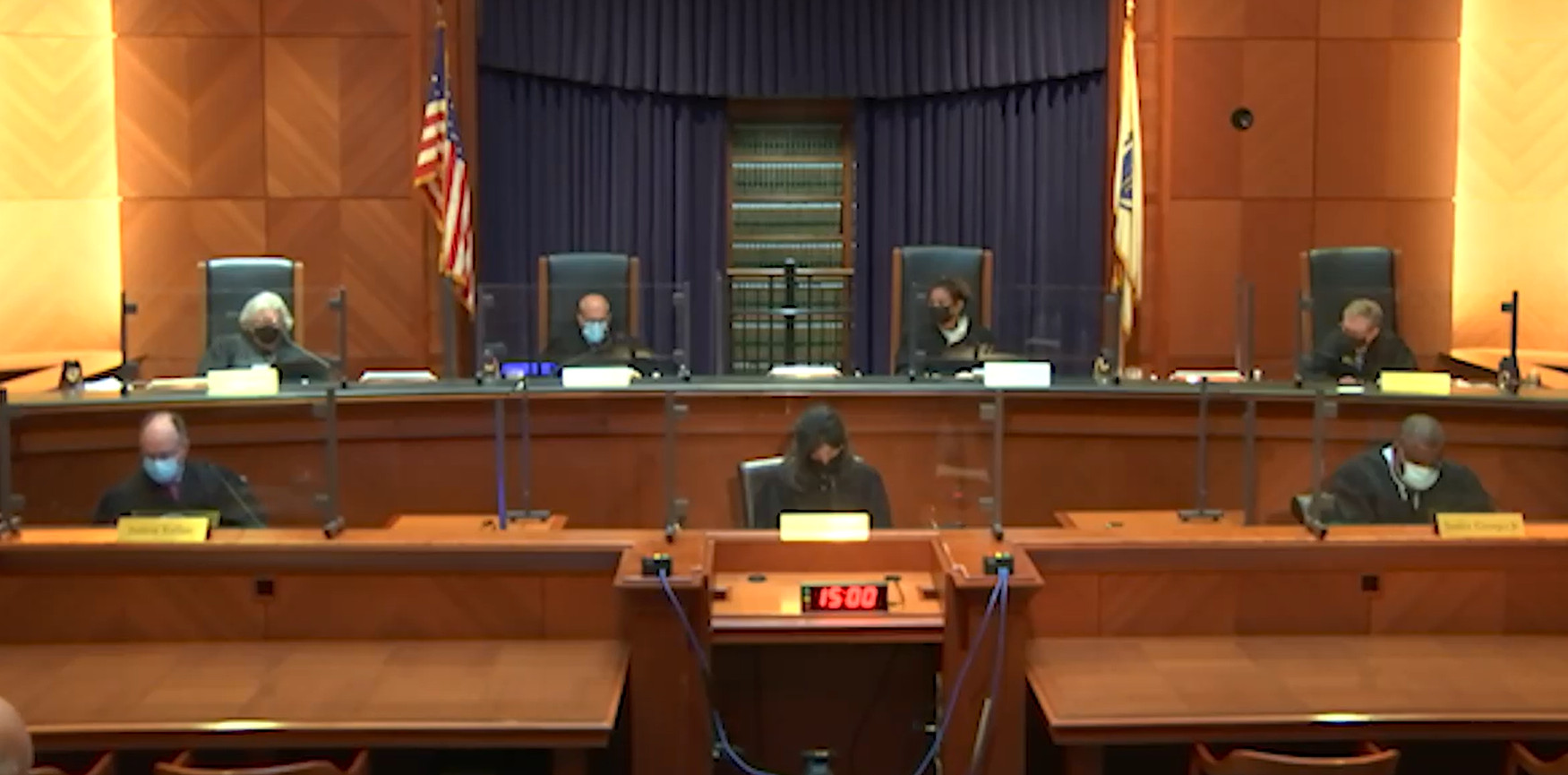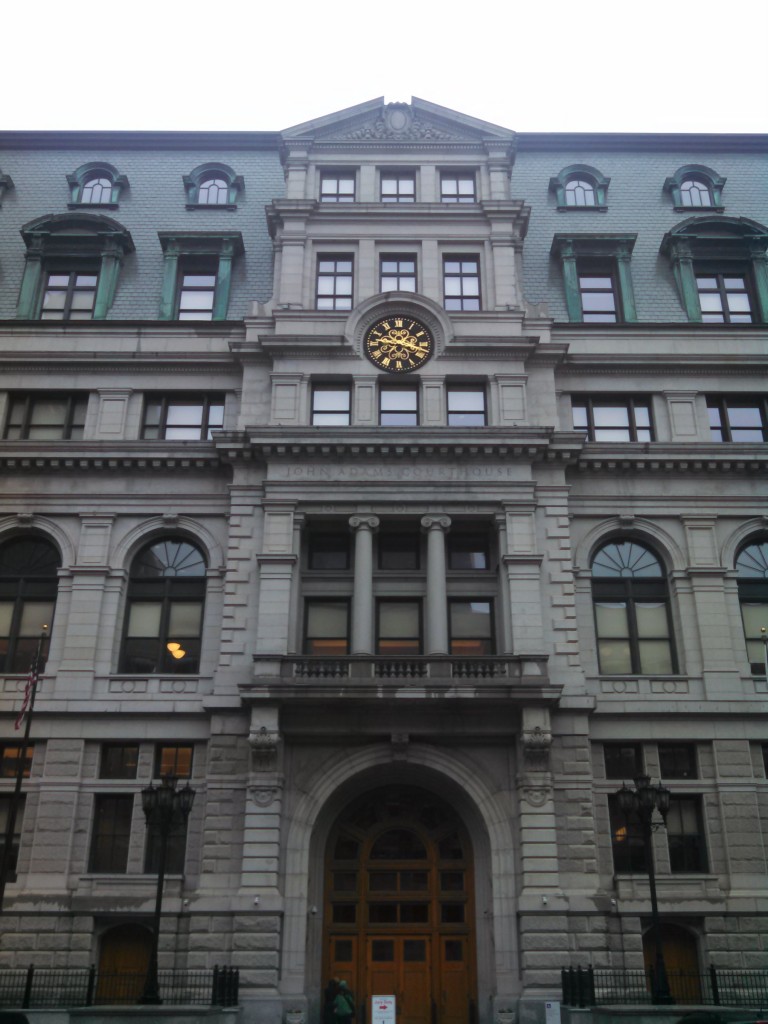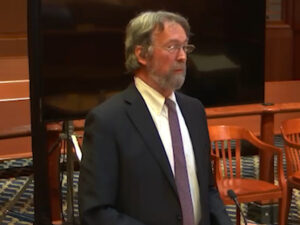A Mayor Called Sue(d): High Court Grills Mayor & Council Lawyers at Hearing…
BOSTON—The Supreme Judicial Court of Massachusetts on Monday has not yet crushed Springfield Mayor Domenic Sarno’s belief in his sweeping power over the city. During oral arguments for his appeal of a lower court’s greenlight of the Police Commission’s revival, the justices of the state’s highest court challenged both sides. The justices’ comments revealed they were contemplating of the some of the mayor’s more expansive arguments.
Sarno attorney Michael Angelini’s arguments did not seem to impress the court. They pushed back on the claim that the mayor’s appointment authority limits the Council’s power to reorganize city departments. Yet, one question directed at the Council’s attorney, Thomas Lesser, encapsulated the Court’s discomfort with the case.
“There’s some limit on your powers, right?” Justice Scott Kafka said of the Council’s authority later in the arguments. “There’s some strong mayor component to this that can’t be intruded upon. Where that line is kind of hard to figure.”
In March, Hampden Superior Court Judge Francis Flannery ruled the City Council properly exercised its authority to resurrect the Police Commission over Sarno’s veto. That panel would become the governing body of the Police Department and replace the sole commissioner that now runs it. Sarno appealed that ruling. Both sides agreed to seek direct review from the SJC instead of the Appeals Court.
The briefs in the case largely echo the arguments made in Superior Court. The mayor argues that his unfettered—and uncontested—right to appoint whoever he wants to lead departments also means he can decide the structure of leadership of departments. His lawyers have additionally cited a separate statute that empowers cities and towns to enter into employment contracts with the heads of fire and police departments.
The Council notes that it has an inherent power to reorganize city departments controls. At no point have the body’s lawyers argued in court that the Council could control whom the mayor can appoint—though it had originally attempted to establish qualifications which Flannery struck down. Rather, councilors are merely exercising their authority set up city government how they see fit.
The hearing took place in a cavernous, near-vacant John Adams Courthouse in Boston. Attorneys and the press had to be escorted up to the courtroom from the main entrance near Government Center—or from lawyers’ conference room just before arguments. A relic of early COVID protocols, this kept the courtroom largely empty.
Justices wore masks throughout the hearing in the airy, wood-paneled court. The advocates removed theirs while speaking. Angelini appeared without his co-counsel. Lesser’s co-counsel, Michael Aleo, sat at the appellee’s table.
Angelini, a Worcester lawyer Sarno hired when the Council filed suit, faced immediate questions about what “reorganize” means in the City Charter. As the attorney for the appellant, he went first and for partly that reason faced some tougher questioning.
“Mr. Angelini, in your view, what does the word reorganize mean?” Justice Frank Gaziano asked, almost rhetorically. Angelini tried to put that off, but Gaziano insisted.
Angelini conceded its generally understood definition. However, he played down that section of the city charter—which applies to all such charters—in favor of the handful of sections particular to Springfield’s charter that empower the mayor. Angelini dismissed the idea that limiting the mayor’s appointment power to the number of positions the Council creates was “sophistry.”
“By implication, it tells the mayor that he cannot do what he wants to do in appointing someone as head of the department,” Angelini said.
Some of the justices disagreed.

Attorney Michael Angelini (via bowditch.com)
“He gets to do everything. He just doesn’t get to decide how the department is structured, which seems to be a classic legislative act, so I am confused by why there’s an inconsistency,” Justice Kafker said of the mayor.
When Angelini moved on to the employment contract statute, the conversation became a bit muddled. The justices did not easily untangle the employment statute from structure of the Police Commission under the ordinance. For a time, some seemed to incorrectly believe the mayor could contract with the members of the Commission.
During an exchange Chief Justice Kimberly Budd initiated, Attorney Lesser clarified the contracting authority referred to the operational head of a police—or fire—department, not the five member of a police commission.
Specifically, he said during his arguments, the operational leader of a police department would be negotiating with his/her appointing authority. Under the thus far unenforced ordinance, that appointing authority is the commission, which the mayor appoints.
In his opening remarks Lesser, called the case “extremely straightforward.”
When Gaziano queried the City Council attorney about Angelini’s references to the strong mayor sections of the charter, Lesser said there was no conflict.
“He has ultimate power to determine to determine those five people who serves on that board so there is no conflict,” he said of the mayor.
In response to Justice Dalila Wendlandt questions about Plan A (strong mayor) powers, Lesser added, “The Plan A form of government simply says the mayor has the power of appointment and the power of revocation. It doesn’t say the mayor has the power to determine the form of government, which is a pure legislative act.”
Justice David Lowy picked up Angelini’s point about the Board being unpaid. He opined that frustrate the mayor’s powers especially with a five-member board. Lesser said this issue did not come up before. He added that a failure to find unpaid members was a theoretical—perhaps the mayor could find volunteers. However, it does not change the Council’s authority to reestablish the Commission.
In Superior Court, Flannery asked no questions of the parties arguing their motions for summary judgment—the procedural vehicle for a ruling. Consequently, it was impossible to deduce where he was leaning in the case. In the end, he gave the Council almost everything they wanted on the law, save the qualifications for Commission appointees. For Flannery, silence may have been preferable to tipping his hand about how strenuously he would reject the mayor’s position.
Indeed, two justices of the SJC asked no questions. Chief Justice Budd’s comments mostly navigated toward clarification.

How will the Supreme Judicial Court balance out mayor & Council? (created via wikipedia, Spfld City Hall & WMP&I images)
Some justices were active in their questioning, though. Those who did probe further were willing to push the Council’s attorneys with Angelini’s argument. That suggests some do see an impingement of mayoral authority. However, they did not seem especially credulous of the mayor’s assertion of appointive omnipotence, either. This evenhandedness may evince true conflict. Alternatively, it could reflect a desire to not pile on one party or the other shall. This shall remain a mystery until the court’s opinion arrives.
There was some palpable discomfort among the justices that this case was even before them. Justice Gaziano, while not tipping his hand either way, observed ultimately the voters decide whether something the mayor or councilors are doing is crazy.
Were the Justices to rule in the mayor’s favor, constructing a coherent opinion could be a jurisprudential high-wire act. The mayor’s lawyers have produced well-researched briefs. Yet, almost none of the cases they cite come remotely close to sustaining the mayor’s position. Courts have repeatedly confirmed the mayor can appoint whomever he wants. Yet they have left the actual construction of government to legislators.
Because many other Massachusetts cities use the same model charter as Springfield, the Court’s ruling will ripple out across the commonwealth. The ability of councils to create, abolish, transfer or reorganize departments in dozens of cities would change dramatically if Sarno succeeds.
It could be several months before the SJC releases its opinion.


